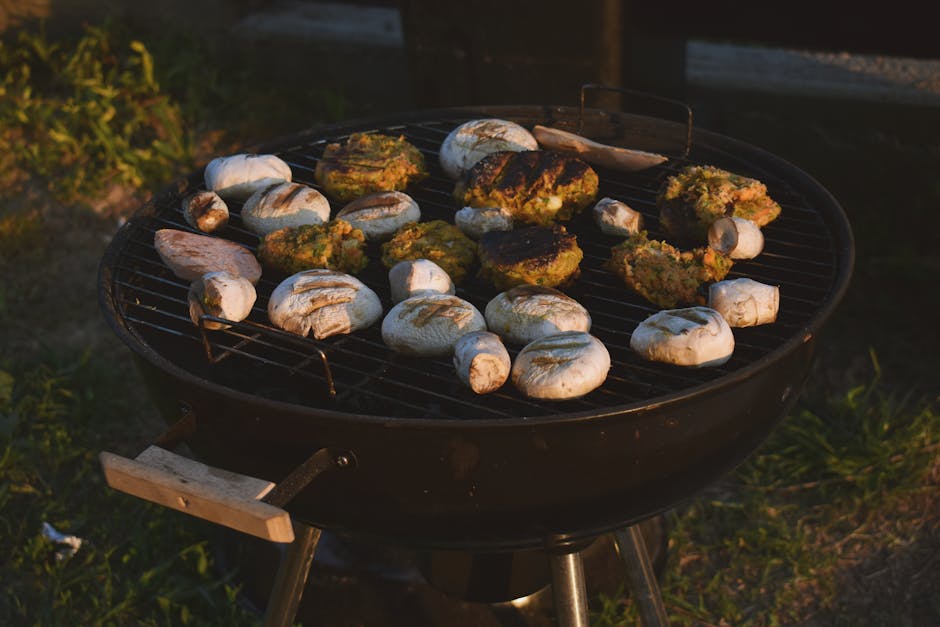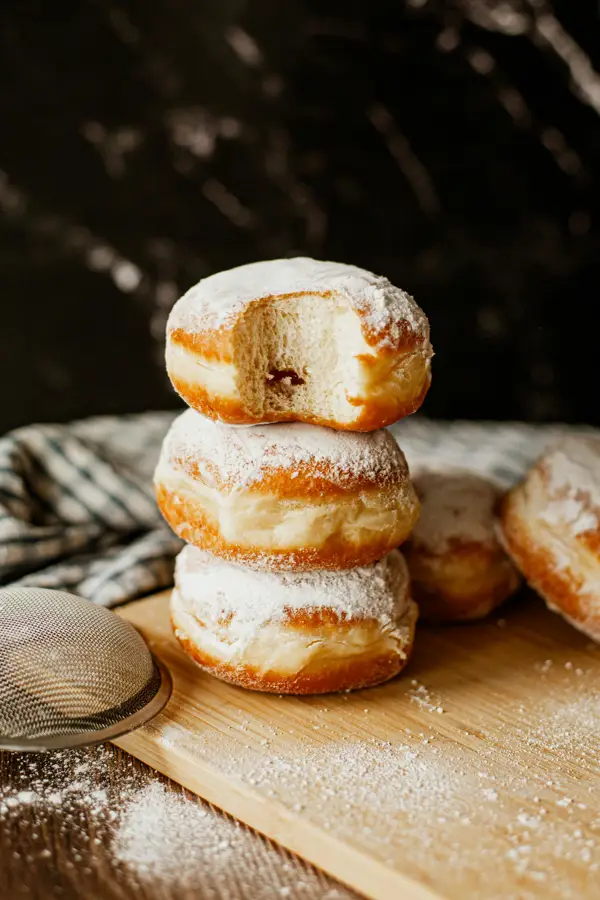The aroma of smoky, tender BBQ ribs is enough to transport anyone to a summer cookout, a family reunion, or a lively tailgate party. But the seemingly simple dish boasts a rich and complex history, far exceeding its modern association with casual gatherings. While the exact origins are debated, barbecuing, the low-and-slow cooking method at the heart of BBQ ribs, is believed to have roots in the Caribbean, with indigenous populations utilizing this technique long before European colonization. The practice spread throughout the Americas, evolving significantly in different regions. From the Spanish conquistadors’ influence to the unique contributions of enslaved African Americans, the techniques and flavor profiles diversified, creating the regional variations we know and love today.
In the United States, the emergence of BBQ ribs as a popular dish is intrinsically linked to the American South, particularly regions like Texas, Memphis, and Kansas City, each with its own distinct style. These styles vary in the type of wood used for smoking (hickory, mesquite, pecan, etc.), the type of sauce applied (vinegar-based, tomato-based, dry rub), and even the specific cut of ribs employed (spare ribs, baby back ribs, St. Louis-style ribs). The popularity of ribs is undeniable; according to the National Pork Board, Americans consume billions of pounds of pork ribs annually, highlighting the enduring appeal of this flavorful dish. This widespread consumption speaks volumes about our cultural attachment to ribs as a celebratory food, a comfort food, and a symbol of community and shared experiences.
Interestingly, while traditional BBQ ribs are often associated with outdoor smoking, this recipe focuses on achieving that same tender, fall-off-the-bone texture using an oven. This method offers a more accessible and convenient alternative for home cooks, without compromising on flavor. While purists might debate the authenticity, oven-baked ribs allow individuals without access to smokers or outdoor grilling space to enjoy this beloved culinary tradition. This guide will walk you through a step-by-step process, ensuring you achieve perfectly cooked, delicious BBQ ribs, regardless of your cooking experience. Get ready to savor the taste of history and tradition, perfected in the comfort of your own kitchen.
Ingredients and Measurements
This recipe yields approximately 6 servings of succulent BBQ ribs. The ingredient quantities can be adjusted proportionally for larger or smaller batches. Accuracy in measurements is crucial for achieving optimal flavor and texture. Use a kitchen scale for the most precise results, especially when measuring spices.
For the Ribs:
- 3 lbs bone-in pork ribs (baby back or St. Louis style – your preference!), trimmed of excess membrane. Removing the membrane is essential for tender ribs; it prevents the rub from penetrating and the ribs from becoming tough.
For the Dry Rub:
- 2 tablespoons brown sugar (packed)
- 2 tablespoons paprika (smoked paprika is recommended for a deeper flavor)
- 1 tablespoon garlic powder
- 1 tablespoon onion powder
- 1 tablespoon chili powder (adjust to your spice preference)
- 1 teaspoon ground cumin
- 1 teaspoon ground black pepper
- 1 teaspoon cayenne pepper (optional, for extra heat)
- 1 teaspoon salt (or to taste – start with less and add more as needed, depending on the saltiness of your other ingredients)
For the BBQ Sauce: (You can use your favorite store-bought sauce or make your own – recipe not included here)
- 1 ½ cups of your preferred BBQ sauce. Consider the sweetness and tanginess level when choosing a sauce. A balance of both is ideal.
For the Oven Method:
- 1 cup apple cider vinegar (or other vinegar of your choice)
- ½ cup chicken broth or water
Important Notes on Measurements: Always use measuring spoons and cups for accurate results. For spices, gently spoon the ingredient into the measuring spoon to avoid packing it down, which will lead to inaccurate measurements and potentially overpowering flavors. If you are using a homemade BBQ sauce, adjusting the quantity may be necessary depending on the consistency and thickness.
Professional Tip: Weighing your ingredients ensures consistency across multiple batches. A kitchen scale allows for greater precision than using volume measurements, especially with dry ingredients.
Equipment List
Making delicious BBQ ribs in the oven requires the right tools. This list details the essential equipment, along with recommendations for optimal results. Having everything prepared beforehand will streamline the cooking process and ensure a smoother, more enjoyable experience.
Baking Dish: You’ll need a large, oven-safe baking dish, ideally around 9×13 inches or larger, depending on the quantity of ribs you’re preparing. A roasting pan with a rack is even better, as it allows for even cooking and prevents the ribs from sitting in accumulated juices. Avoid using a dish that’s too small, as overcrowding will hinder proper cooking and browning.
Meat Thermometer: A reliable instant-read meat thermometer is absolutely crucial for ensuring your ribs are cooked to perfection. Internal temperature is the ultimate indicator of doneness, not just cooking time. Aim for an internal temperature of 190-205°F (88-96°C) for tender, fall-off-the-bone ribs.
Aluminum Foil: About 2-3 large sheets of heavy-duty aluminum foil are recommended. This is essential for creating a tight seal during the initial braising phase, helping to lock in moisture and tenderize the ribs. Ensure the foil is heavy-duty to prevent tearing.
Basting Brush: A silicone basting brush is ideal for applying the BBQ sauce evenly across the ribs throughout the cooking process. Avoid using natural bristle brushes, as these can shed bristles into your food.
Mixing Bowls: You’ll need at least two medium-sized mixing bowls. One for preparing the dry rub (if using) and another for mixing the BBQ sauce. Larger bowls provide more workspace and prevent spills.
Measuring Cups and Spoons: Accurate measurements are important for achieving consistent results. A set of measuring cups (dry and liquid) and measuring spoons will ensure you use the correct quantities of ingredients in your dry rub and BBQ sauce.
Oven Mitts or Gloves: Protect your hands from burns with a pair of oven mitts or heat-resistant gloves. Always use oven mitts when handling hot dishes and removing them from the oven.
Optional: A meat injector can be used to further infuse flavor into the ribs, although it’s not necessary. A grill pan or cast-iron skillet can also be used for searing the ribs before baking for added flavor and texture.
Important Note: Before you begin, ensure all your equipment is clean and ready to use. This will help maintain hygiene and prevent any unwanted flavors from affecting your ribs.
Preparation of the Ribs (Trimming, etc.)
Before you even think about applying that delicious BBQ rub, proper rib preparation is key to achieving tender, fall-off-the-bone results. This involves trimming excess fat and membrane removal – two crucial steps often overlooked.
Begin by inspecting your rack of ribs. You’ll likely find a thick layer of fat covering the back of the ribs. Using a sharp boning knife, trim away approximately ½ to ¾ of this fat layer. Don’t remove all of it; some fat renders and adds flavor, but excessive fat can hinder the ribs from properly browning and absorbing the smoke flavor (in a smoker, or the oven’s equivalent). Aim for an even layer of about ¼ inch remaining. You can also use kitchen shears to make this process easier, particularly when trimming along the bone.
Next, and this is extremely important, remove the thin membrane that covers the underside of the ribs. This tough, paper-like membrane prevents the ribs from becoming tender and absorbing the flavorful smoke (or oven heat). To remove it, use a butter knife or a specialized membrane removal tool to carefully loosen one corner of the membrane. Once a corner is loose, get a good grip and slowly peel it back, working your way across the entire rack. It will come off in one piece if done correctly. If it tears, don’t worry; just continue peeling away the remaining sections.
Once the membrane is removed, inspect the ribs for any loose or jagged pieces of bone. Use your knife or shears to trim these away to ensure even cooking and prevent potential injury. Also, check for any particularly thick sections of meat; you might want to gently score these to help them cook more evenly.
Finally, pat the ribs dry using paper towels. This helps create a better surface for your rub to adhere to, resulting in a more flavorful and evenly seasoned rack of ribs. Removing excess moisture also helps promote browning and crisping during the cooking process.
With your ribs properly trimmed and prepared, you’re ready to move on to the next step and create those mouthwatering BBQ ribs!
Dry Rub Preparation & Application
The dry rub is the foundation of incredible BBQ ribs, imparting flavor and creating a beautiful bark. This recipe uses a classic blend, but feel free to adjust to your taste preferences. For this recipe, we’ll make enough rub for approximately 3 racks of ribs (about 6 pounds).
Ingredients for the Dry Rub:
- 1/4 cup packed light brown sugar
- 2 tablespoons paprika (sweet or smoked, your preference)
- 2 tablespoons garlic powder
- 1 tablespoon onion powder
- 1 tablespoon ground cumin
- 1 tablespoon black pepper (coarsely ground is best)
- 1 tablespoon salt (kosher salt recommended)
- 1 teaspoon cayenne pepper (optional, for heat)
- 1 teaspoon dried oregano
Preparation: In a medium bowl, thoroughly combine all dry rub ingredients. Ensure there are no clumps. Use a whisk or your fingers to break up any larger pieces of spices to create an even texture. This ensures consistent flavor distribution across the ribs.
Application: Pat the ribs completely dry with paper towels. Dry ribs are crucial for proper rub adhesion and bark formation. Any moisture will prevent the rub from sticking and developing that delicious crust.
Generously apply the dry rub to all surfaces of the ribs, ensuring that every nook and cranny is coated. Don’t be shy with the rub! Use your hands to really work it into the meat. Pressing the rub into the meat helps it adhere better and penetrate deeper for more intense flavor.
Once the ribs are thoroughly coated, place them on a wire rack set over a baking sheet. This allows for even air circulation around the ribs and helps prevent them from steaming during cooking. Avoid overcrowding the ribs on the baking sheet. Allow the rubbed ribs to sit uncovered at room temperature for at least 30 minutes, or up to 2 hours. This allows the rub to penetrate the meat and enhances the flavor development.
Professional Tip: For an even more intense flavor, consider applying a thin layer of your favorite BBQ sauce during the last 30 minutes of cooking. This adds both sweetness and a glossy finish.
Marinade (if using)
While not strictly necessary, marinating your ribs before cooking significantly enhances their flavor and tenderness. A good marinade will penetrate the meat, breaking down tough connective tissues and infusing it with deliciousness. Consider the length of time you have available when deciding on a marinade; longer marinating times generally yield better results, but a shorter marinade is better than none at all.
For a classic tangy marinade, try this recipe: Combine 1 cup of your favorite BBQ sauce (choose one with a good balance of sweet and tangy), ½ cup apple cider vinegar, ¼ cup olive oil, 2 tablespoons Worcestershire sauce, 2 tablespoons brown sugar, 1 tablespoon smoked paprika, 1 tablespoon garlic powder, 1 tablespoon onion powder, 1 teaspoon ground black pepper, and 1 teaspoon cayenne pepper (optional, for a little heat). Whisk all ingredients together thoroughly until well combined. The oil helps emulsify the mixture and allows for better penetration into the meat.
Marinating Time: Ideally, marinate your ribs for at least 4 hours, but preferably overnight (8-12 hours) in the refrigerator. For shorter marinating times (minimum 2 hours), consider using a smaller, more concentrated marinade to ensure that the flavors penetrate. Don’t be afraid to experiment and adjust the spices to your taste preferences. Adding a splash of your favorite bourbon or whiskey can add a depth of flavor.
Important Considerations: Always marinate your ribs in a non-reactive container, such as glass or stainless steel. Avoid using aluminum, as it can react with the acidic ingredients in the marinade. Ensure the ribs are completely submerged in the marinade; if necessary, use a zip-top bag and press out excess air. Once the ribs are marinated, remove them from the marinade and discard the used marinade. Do not reuse it.
Alternative Marinade Ideas: Experiment with different flavor profiles! Consider a dry rub instead of a wet marinade, or combine elements of both. For a sweeter marinade, increase the brown sugar or add honey. For spicier ribs, add more cayenne pepper or some chopped chipotle peppers in adobo sauce. A citrus-based marinade using orange or lime juice can also add a bright, refreshing element. Remember to always adjust the quantities of ingredients to suit your personal preferences and the amount of ribs you are preparing.
After Marinating: Pat the ribs dry with paper towels before cooking. This helps to create a nice crispy bark on the ribs during the cooking process. The excess moisture from the marinade can hinder the browning and crisping process.
Oven Cooking Techniques (Temperature, Time, Basting)
Mastering oven-baked BBQ ribs involves understanding the interplay of temperature, time, and basting. The goal is tender, fall-off-the-bone meat with a delicious, sticky bark. We’ll break down each element to ensure your ribs are perfect.
Temperature: The ideal oven temperature for cooking ribs is between 275°F (135°C) and 300°F (150°C). Lower temperatures promote even cooking and prevent the outside from burning before the inside is tender. Higher temperatures risk drying out the ribs. Using a reliable oven thermometer is crucial for maintaining consistent heat. Avoid opening the oven door frequently, as this causes temperature fluctuations and extends cooking time.
Time: Cooking time depends on the size and thickness of your ribs, typically ranging from 2.5 to 4 hours. For a 3-4 pound rack of baby back ribs, plan for approximately 3 hours at 275°F (135°C). St. Louis-style ribs, which are generally thicker, might require closer to 4 hours. Use a meat thermometer to check for doneness. The ribs are ready when the internal temperature reaches 190-200°F (88-93°C) in the thickest part of the meat. Don’t rely solely on time; the internal temperature is the true indicator.
Basting: Basting is key to developing that signature BBQ flavor and keeping the ribs moist. Prepare your favorite BBQ sauce (or a simple mixture of your choice). For a 3-4 pound rack, you will need approximately 1-1.5 cups of sauce. Begin basting after the first hour of cooking. Apply the sauce generously, ensuring it coats all surfaces of the ribs. Repeat the basting process every 30-45 minutes. Avoid basting too early, as the sugars in the sauce can burn before the ribs are tender. During the last 30 minutes of cooking, you can increase the frequency of basting for an extra-sticky, flavorful finish. Consider using a spray bottle for even application and to avoid opening the oven frequently.
Important Note: Wrap your ribs in foil with some liquid (apple cider, broth, or even just water) during the last hour of cooking for extra moisture if you prefer a more tender, less bark-centric result. This is optional but recommended for very thick racks. Remove the foil during the final 30 minutes to allow the bark to crisp and caramelize.
By carefully monitoring the temperature, timing your cooking accurately, and employing a consistent basting strategy, you’ll achieve perfectly tender and flavorful oven-baked BBQ ribs every time.
Recommendations
For the most tender and flavorful oven-baked BBQ ribs, we highly recommend using a meat thermometer to ensure they reach an internal temperature of 190-200°F (88-93°C) for optimal tenderness. Don’t rush the cooking process; low and slow is key to achieving that melt-in-your-mouth texture. Experiment with different BBQ sauces to find your perfect flavor profile – from sweet and smoky to tangy and spicy, the possibilities are endless.
Serving suggestions are plentiful! These ribs are fantastic on their own, but they’re also delicious served with classic BBQ sides. Consider pairing them with creamy coleslaw for a refreshing contrast, or some tangy baked beans for a hearty meal. Cornbread is another excellent accompaniment, soaking up the delicious BBQ sauce. For a complete meal, serve with a simple green salad to add some freshness and balance.
Storage is crucial to maintaining the quality of your ribs. Once cooled completely, store leftover ribs in an airtight container in the refrigerator for up to 3-4 days. You can also freeze them for longer storage – up to 3 months. To reheat, gently warm them in the oven or microwave, avoiding overcooking which can dry them out. Reheating in a low oven wrapped in foil is recommended for best results.
Nutritional Information (per serving, approximate values will vary based on recipe and ingredients): Calories: 400-500, Protein: 30-40g, Fat: 25-35g, Carbohydrates: 20-30g. Note: These are estimates and may vary depending on the specific ingredients and portion size used. For accurate nutritional information, use a nutrition calculator with your exact recipe details.
For a healthier option, consider trimming excess visible fat before cooking, and using a lower-sugar BBQ sauce. You can also incorporate vegetables into your meal, such as grilled asparagus or a side salad, to boost the nutritional value of your BBQ rib dinner. Enjoy responsibly!





